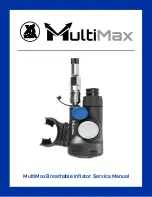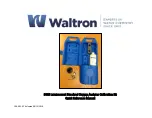
TMA Q Series Getting Started Guide
42
Maintaining the Instrument
The primary maintenance procedures described in this section are the customer’s responsibility. Any further
maintenance should be performed by a representative of TA Instruments or other qualified service personnel.
Consult the online documentation installed with the instrument control software for further information.
WARNING: Because of the high voltages in this instrument, untrained personnel must
not attempt to test or repair any electrical circuits.
CAUTION: Before using any cleaning or decontamination method except those
recommended by TA Instruments in this chapter, please check with TA Instruments to
make sure that the proposed method will not damage the equipment.
Cleaning the Touch Screen
You can clean the TMA touch screen as often as you like. The touch screen should be cleaned with a house-
hold liquid glass cleaner and soft cloth. Wet the cloth, not the touch screen with the glass cleaner, and then
wipe off the touch screen and surrounding surfaces.
WARNING: Do not use harsh chemicals, abrasive cleansers, steel wool, or any rough
materials to clean the touch screen as you may scratch the surface and degrade its
properties.
Cleaning the Probe Assembly
After each experiment, check the probe assembly. If the probe is dirty, remove it using the procedures found
in Chapter 2 and the online help, then clean the probe as follows:
1.
Use contact cleaner or acetone applied with a soft brush or cloth to clean the LVDT core and the upper
probe.
2.
Heat the end of the quartz probe with a Bunsen burner until the residue evaporates and the probe is
clean. Heat the probe very slowly if the sample contains a large amount of glass or mineral filler.
NOTE: Probes may also be cleaned in a nitric acid solution.
















































